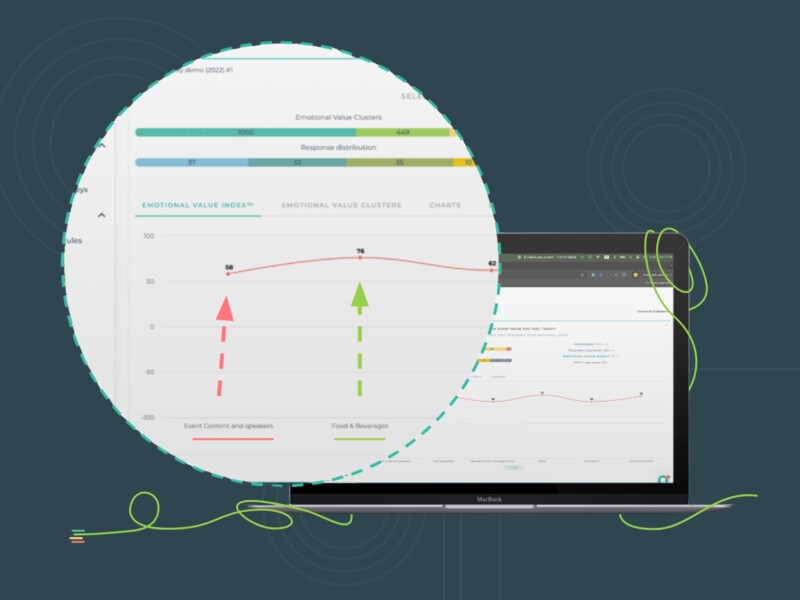It is always the hardest part is to get started! For that reason we have put you together a cheat list to start! Here you go – thank me later!
1. Define the reason why you are on this project in the first place!
One of the biggest errors with many CX projects is that they are started for some ridiculous reason. Let alone only because somebody from the higher management required after reading a blog stating that CX is the most important thing for your business. I’m not arguing that it´s not, but now for the wrong reasons. Customer experience is a hype word at the moment and it is usually heard without a real meaning and content.
So, before starting, make clear to yourself why you are getting into this project? Ask yourself what is the main problem that you want to develop and what is the main goal of your actions. If you do this, you are already further ahead than 95% of all the companies globally.
2. Create customer segments – it is okay to say “all of them!”
Yet again the old rules of marketing apply. You need to know your customers and who you would like to target with your measurement program. It is not wrong to say “To all of them!” but it is crucially important to understand why this kind of decision is made. A teenager would wait for a different kind of approach to measurement than a pensioner would. An old and classic example that’s clear and to the point. If you are not certain what your main customer segments are, there is a way of finding that out, e.g. with our segmentation survey!
3. Define your customer journey and find the touch points that are the most critical to measure
Customer journey means the path that your customer goes through while using your services or buying your products all the way from the first time he or she sees your ads on paper to the time that you nurture them as a regular. Now, this is something that you should be able to put down on paper. Define all the points where you interact with your customer or you would like to. When this is complete it will be much easier to decide what needs to be measured in every customer touch point and how.
4. Select the best KPI´s for your touch points
Key performance indicators (KPIs) are numbers that you track and measure to discover how well you are performing. Now there are a lot of different kinds of KPIs from economical, such as turnover or profit per customer to more intangible KPIs such as customer satisfaction or NPS. When considering customer experience, the most popular metrics are customer satisfaction, Net Promote Score (NPS) and Customer Effort Score (CES). Along your customer’s journey, you might also want to track metrics such as your service level, marketing efficiency or even something as exotic as how far your customers came to use your services. As you may notice, there is a lot to handle. Therefore, it is most important to start somewhere. Start with the easiest and remember to use software that can handle all of them if necessary. Otherwise, you will bury under the project and leave it there.
5. Define channels and methods, and how you are able to measure them
After you have defined what your goal is, what you want to measure and achieve, the next step is to decide how to collect the data! The channels vary from using your website tools, feedback kiosk in your brick & mortar or mobile devices to social media and email. This is an easy place to get lost while many do not understand that it is not the same thing to measure your brick & mortar and your website customer experience. More important than this is to realize that you need to measure the channels where your segments are. That defines the method of measuring. Now that you have decided the channels that you think fit in with your customer segments, connect them with the KPIs you decided before.
The easiest way to tackle this is to use software to cover all the possible digital channels. This helps you with two things: firstly, all the data is now in one place and secondly it will be a lot cheaper that way!
6. Don’t just stand there! Do something!
Remember the first point that I made? You did not start this just for fun! You need to do something with the data. The best way, of course, is to use the data to reach your goals that you defined in the first part to develop your service and your business. But how do you implement the results to be part of your everyday management routine? Start by following your KPIs on a weekly basis and if the level drops below a long time average, pay more attention to why this happened. The more you automate your actions the easier it is for you. Also always, when it is possible, close the feedback loop with your customer. Inform them that you took action on the feedback or use the data in your marketing to tell your customers that you listen to them. Also, a very good way to take advantage of the data is to use it in social media as content or make the data available to your whole organisation to motivate them. These are of course only examples and best practises and you need critically evaluate all of them regarding your own business.
By following these simple steps you should get easily started with your customer experience measurement and development. When reading this and considering, that “hey, I might even do this!” you are way ahead compared to most of the companies on your field. To find out more and continue the discussion, subscribe to our newsletter or contact us!
The article is also published in several different business and CX blogs.
– Jaakko



